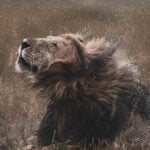
LET IT RAIN – PHOTOGRAPHING IN THE RAIN
27 November 2024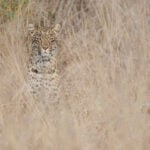
THE IMPORTANCE OF FOCUS IN PHOTOGRAPHY
27 November 2024
LET IT RAIN – PHOTOGRAPHING IN THE RAIN
27 November 2024
THE IMPORTANCE OF FOCUS IN PHOTOGRAPHY
27 November 2024PHOTOGRAPHY TIPS
PHOTOGRAPHING
GORILLAS AND CHIMPANZEES
When you go on a normal safari in Africa you stand the chance of seeing and photographing around 20 mammals during your time in the field. As awesome as this is it can be overwhelming to head out on drive without a clear photographic goal in mind.
The way you would, for example, approach a cheetah that is about to explode into a hunt is very different to the way you would think about and photograph a lioness with her cub. The one scenario requires a seriously high shutter speed and large depth of field while the other requires a more intimate approach which you would execute against by using a shallow depth of field while your shutter speed, and by extension your ISO, would not have to be as high.
On a normal safari the potential scenarios and subjects are endless and in order to walk away with great images you not only have to be in full control of your camera and technical understanding of photography but also do a lot of research on the type of images you have in mind and then, if you're lucky enough, get the opportunity to add all these pieces of the photographic puzzle together. Great as it is - and it really is amazing - it can be quite overwhelming when you are faced with so many options out on safari. People often think that the more subjects you have to photograph the easier it is but this is not the case.
More often than not the opposite is true.
This is a discussion I've had with quite a few people who have asked me what it's like to photograph mountain gorillas and chimpanzees and it makes for a very interesting way of thinking about wildlife photography. You might think that I'm overthinking this a bit but I really feel that the more you prepare your photographic mind and photographic eye before you head out in the field the better your resulting images. This goes just as much when planning for a safari with many potential subjects as when you're planning a trip to photograph species like gorillas and chimpanzees.
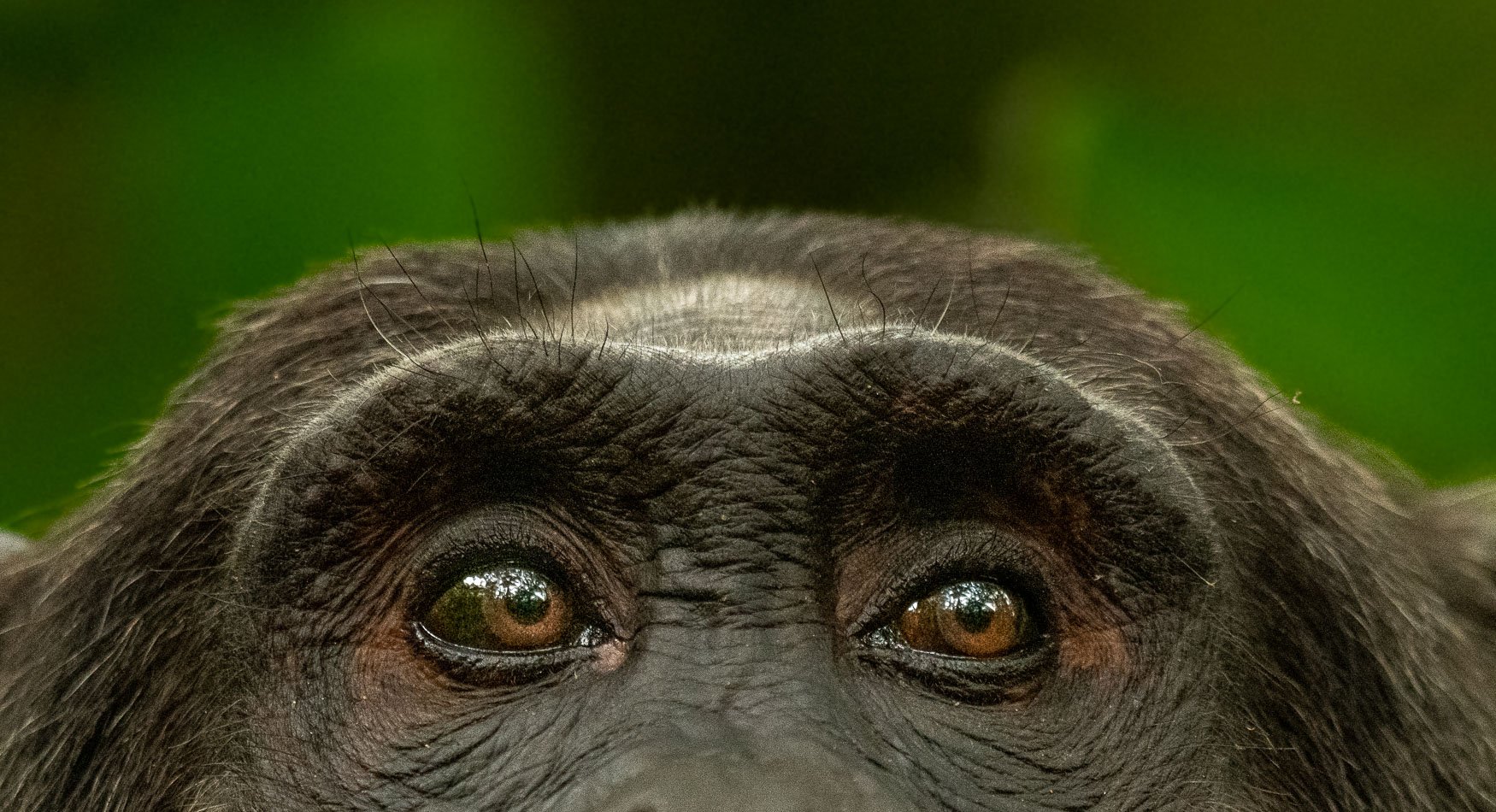
So with that all said, the idea behind this post is to try and help you guys best prepare for when you get to photograph mountain gorillas and chimpanzees by looking at the following three things:
- Equipment
- Technical Considerations
- Composition and Creativity
So here goes with some practical advise for when you go and check off two of the ultimate wildlife photography bucket list items - photographing mountain gorillas and chimpanzees.
Photographic Equipment
What lens should I take? What camera? These are some of the first questions people ask when it comes to photographing primates in Uganda and Rwanda.
Now since you've made the commitment, from both a time and financial points of view, to photograph these animals, I would highly recommend that you make sure you have the correct gear to get the shots that you want. With that in mind there are two important gear considerations.
- Aperture: You are going to need, and want, a lens that can shoot at f/2.8.
- ISO: Not the end of the world but a camera that can handle high ISO shooting is preferable. (Remember that digital noise isn't necessarily the devil.) Along with that, Lightroom has a new feature to help take noise away from your image and it works really effectively, alternatively, there is a plugin to lightroom called Topaz, Which works out VERY well. So With that said, rather have a noisy image than no image at all.
The above two points are vital to keep in mind but more on that in the technical section below.
The environment you will be shooting in is often very dense and you will either want to try and use a very shallow depth of field to drop the 'messy' background as out of focus as possible or you're going to be shooting through foliage in which case the shallow Depth of Field (Dof) will allow you to blur out the foreground and/or background.
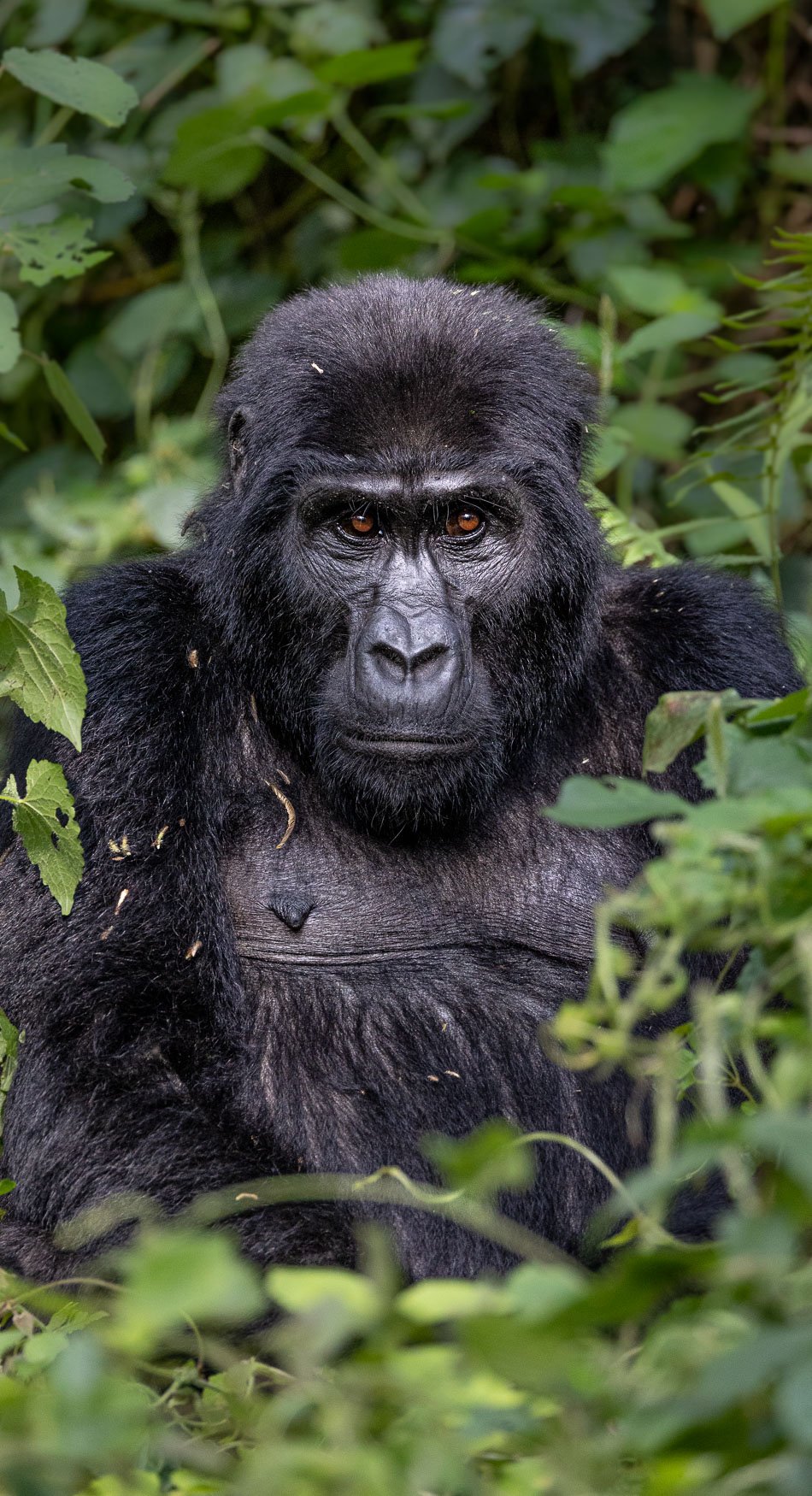
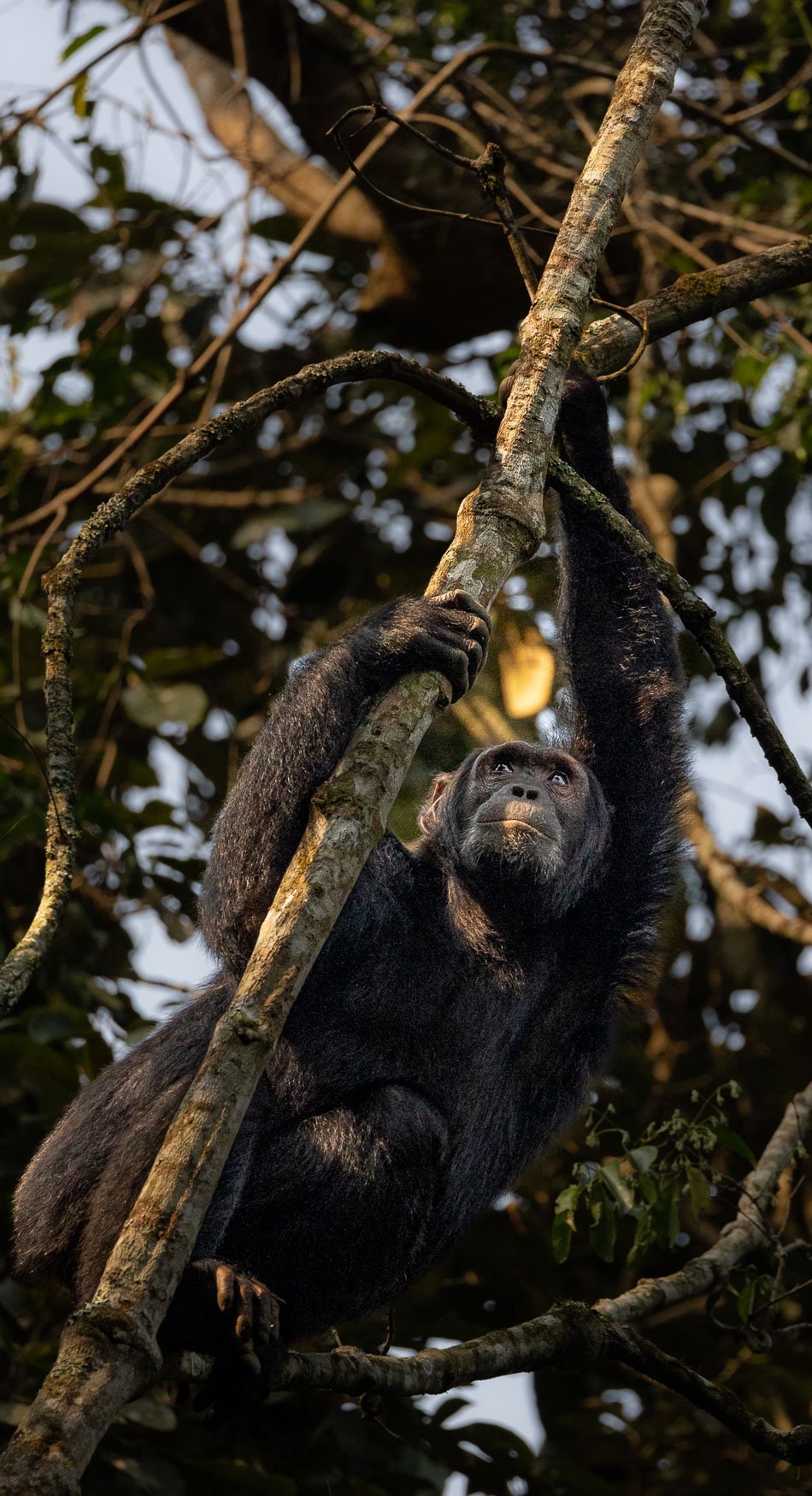
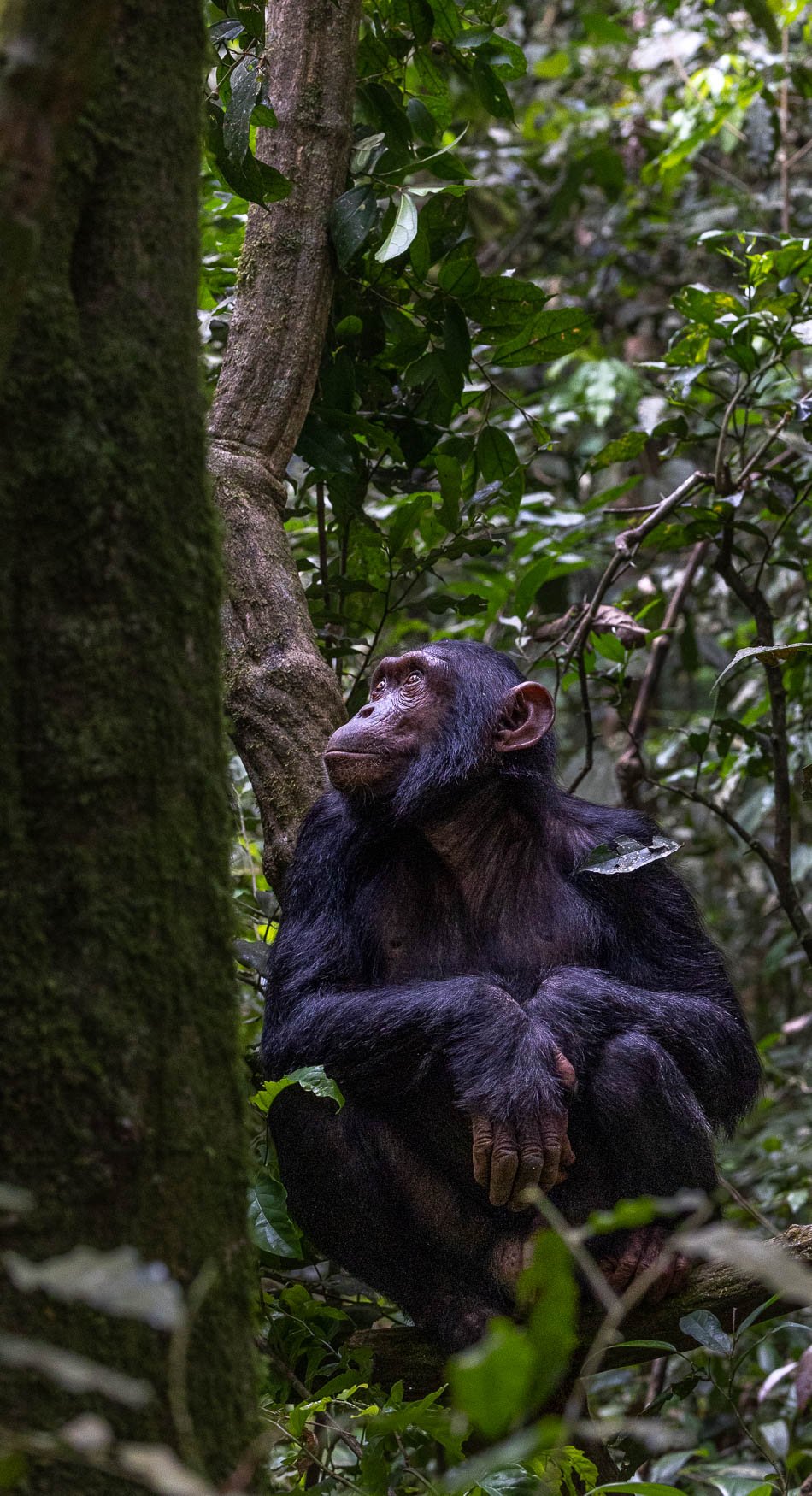
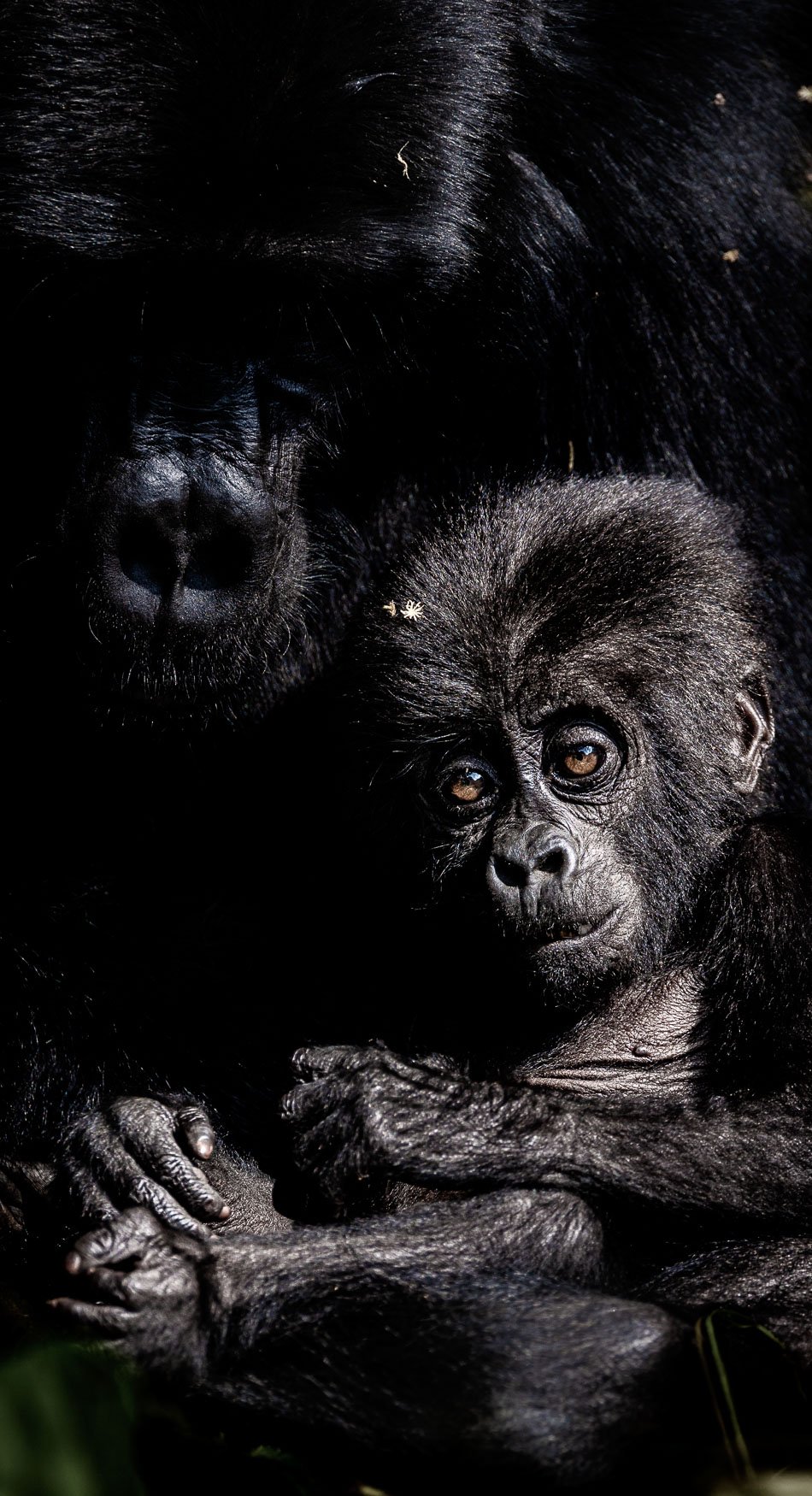
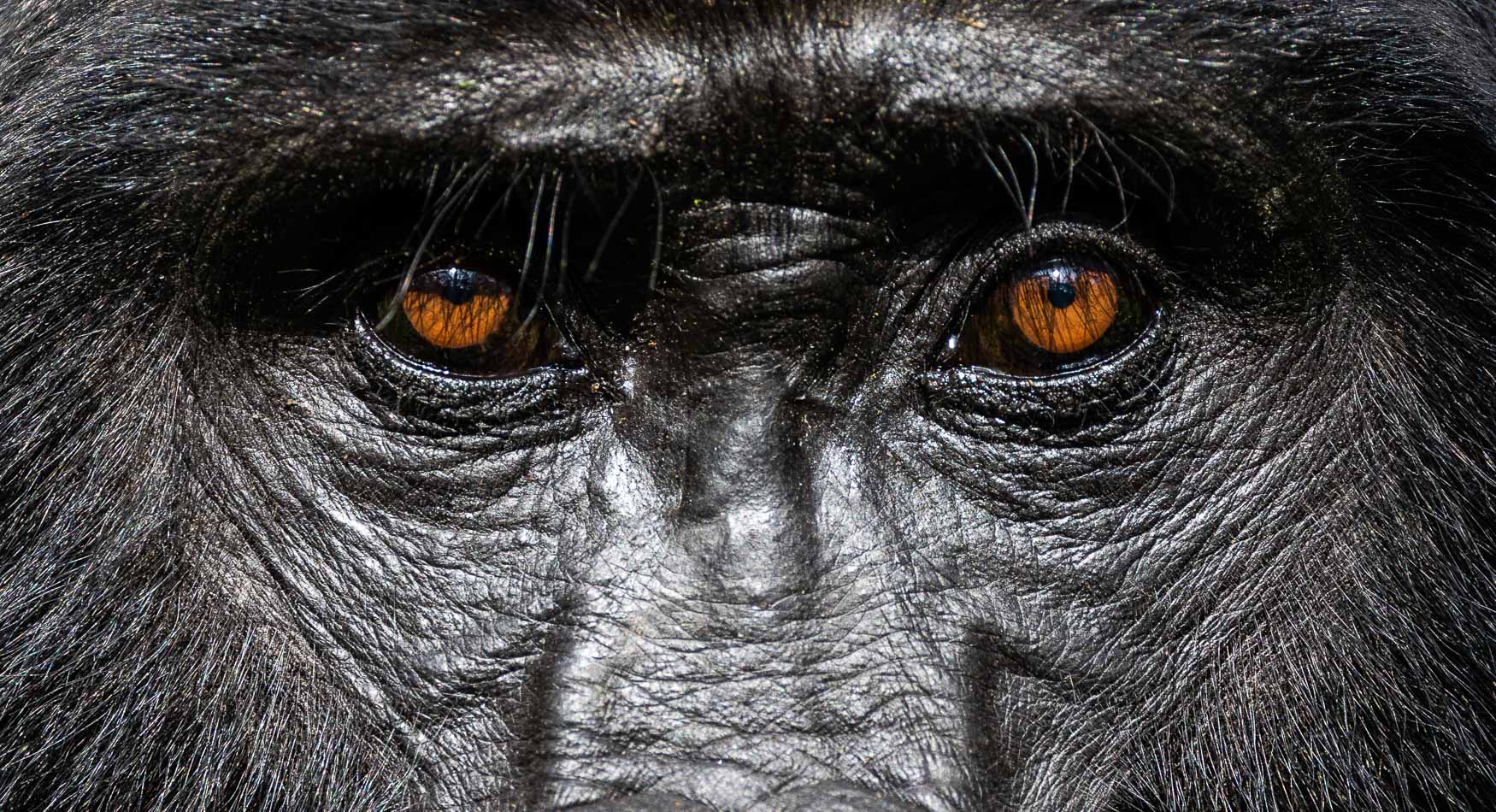
The next, and probably most important choice, must be focal length.
I am going to make this easy for you - you NEED a 70-200mm as your primary lens for photographing gorillas. Based on the environment, average distance to subjects, backgrounds and the depth of field created by the slightly longer focal length this lens will without a doubt be your best bet to extract the most photographic value out of your gorilla and chimp trekking experience.
A very close second would be a prime lens, such as a fixed 400mm f2.8 or a fixed 500mm F4 and depending on the area where you find your gorilla family you might be able to use this quite effectively Because more often than not the background and surrounding environment is thick and not very photographic. So, the extra zoom also allows for some up close and detailed shots of both these species. Being so closely related to us humans, it is nice to do close portraits of their faces, feet, and textures in general.
My choice would always be to shoot with my main body and 70-200 f/28 and the have a second body with my 500mm ready for the moments in between when the tighter shots present themselves.
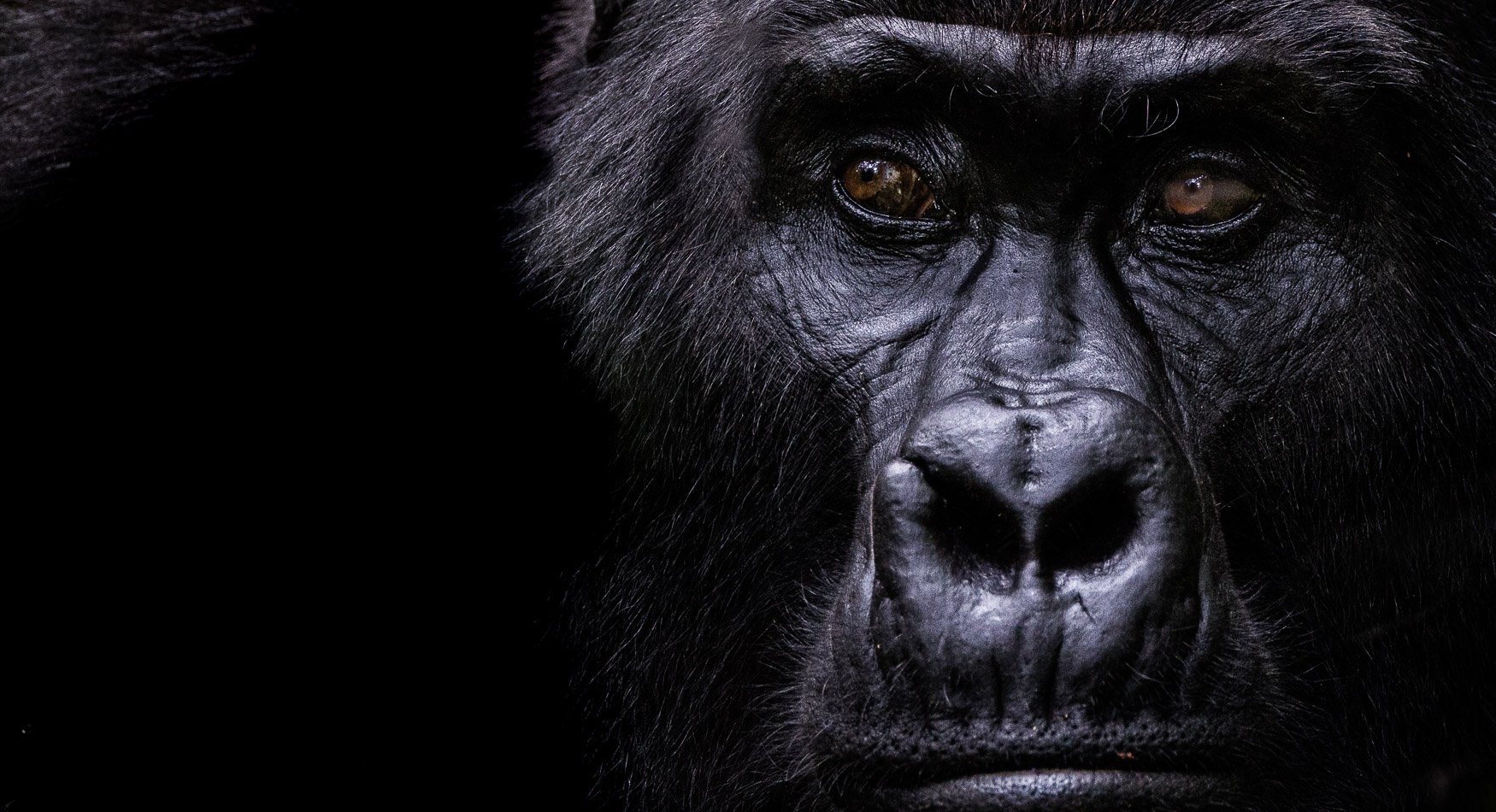

As you can see the 70-200mm and the fixed 500mm was without a doubt my go to lenses. This is a combination that I have used on several trips to Uganda to photograph the gorillas and chimpanzees. This is typically what I pack in terms of gear when heading to Uganda.
Camera Bodies:
- Canon EOS R6
- Canon 1Dxmkii
- Canon 5D4
Lenses:
- Fixed 500mm F4
- 70-200mm f/2.8
- 24-70mm /2.8
Yes, you will most definitely be able to get some proper images with lenses that do not have an f/2.8 but you need to remember that if you are going to be using apertured of around f/5.6 to f/6.3 you won't be able to blur the backgrounds and foregrounds as much and you will more than likely have to push your ISO quite a bit higher to maintain a fast shutter speed. This will in turn mean that you need to consider your camera body and how it handles low-light, high ISO conditions. Considering technology these days and the cameras I listed above, with all 3 camera bodies I am happy to push my ISO as high as I need to go to get the shot, and I am confident in the fact that I can get rid of any noise afterwards.
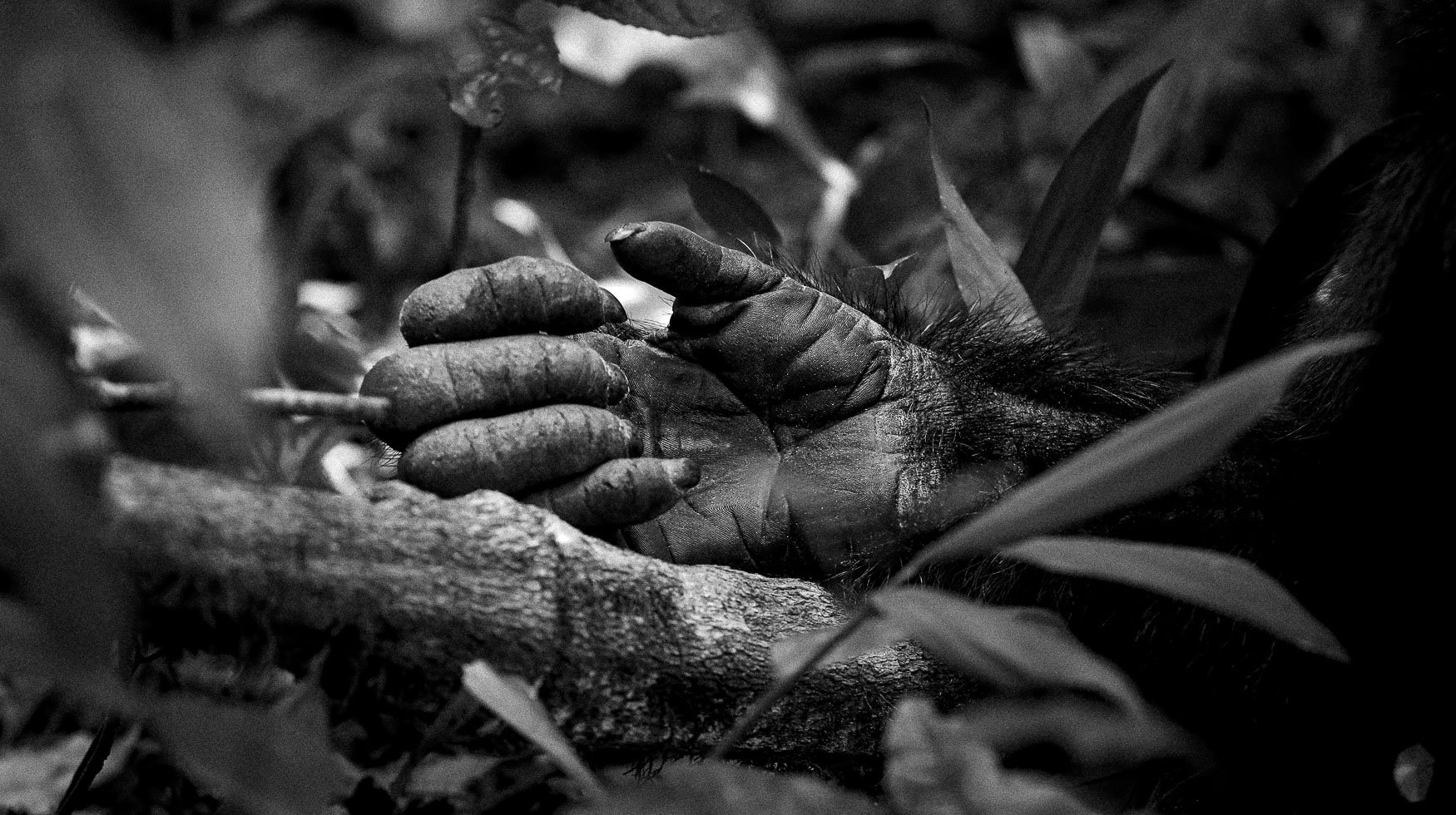
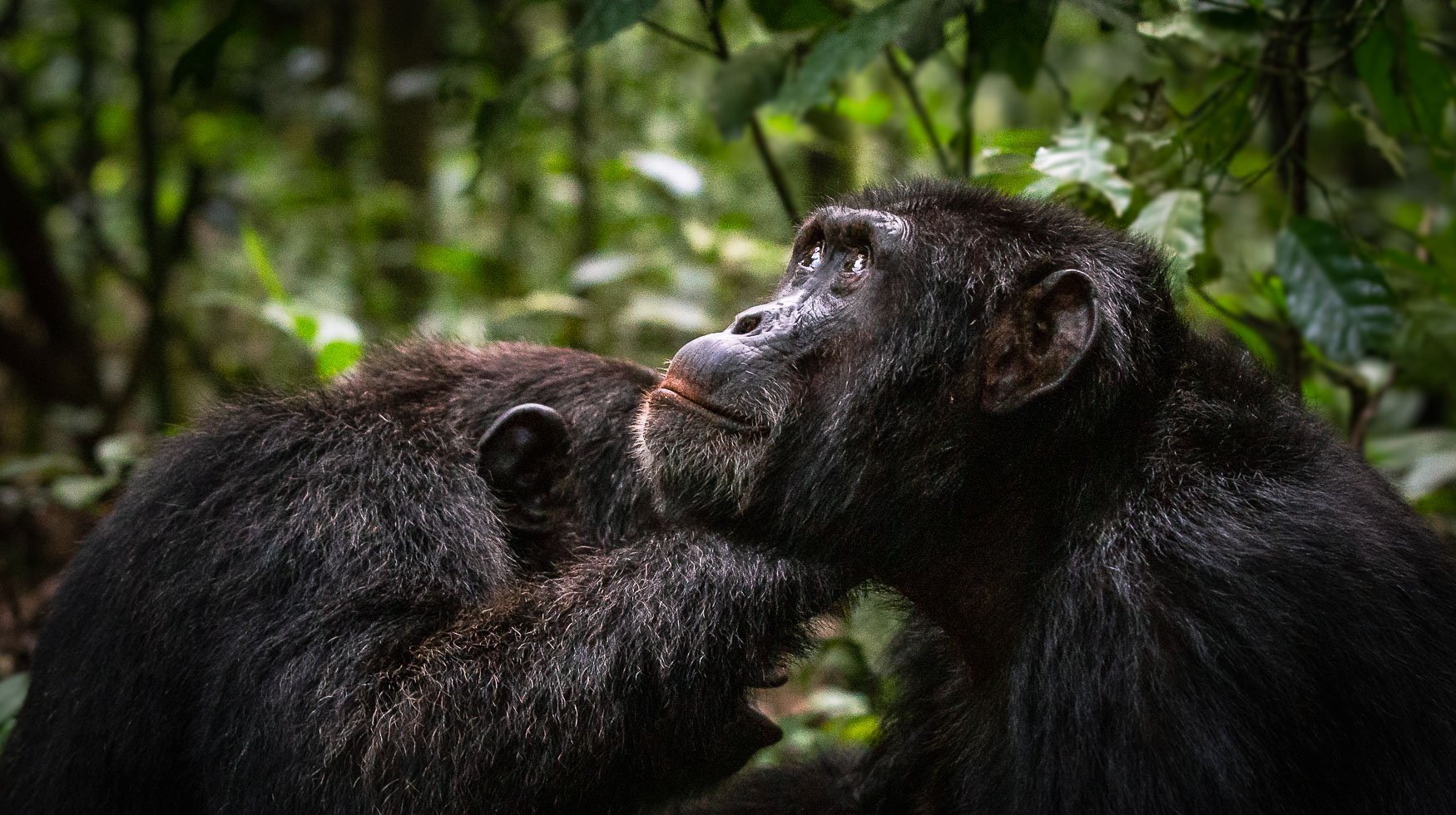
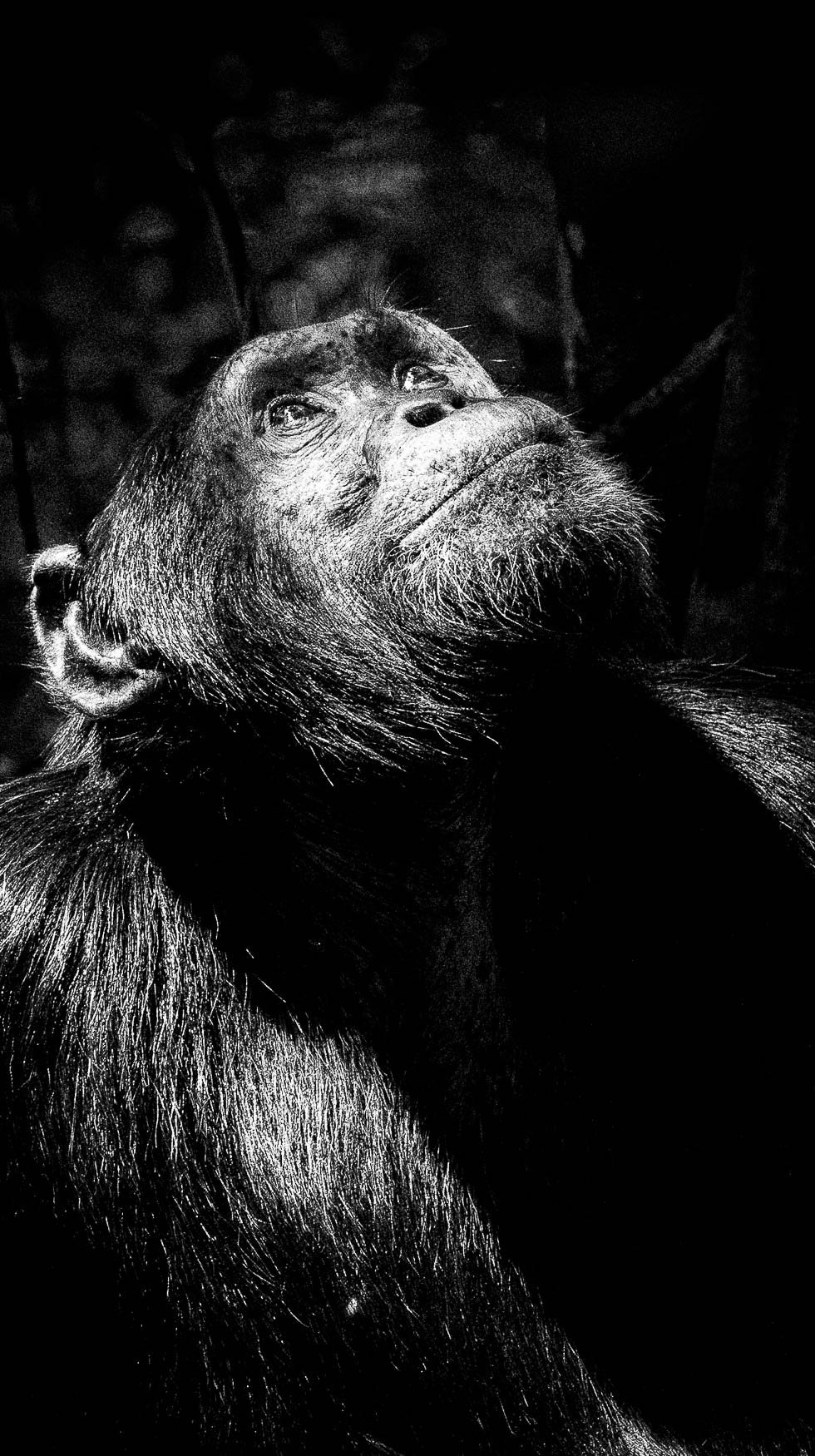
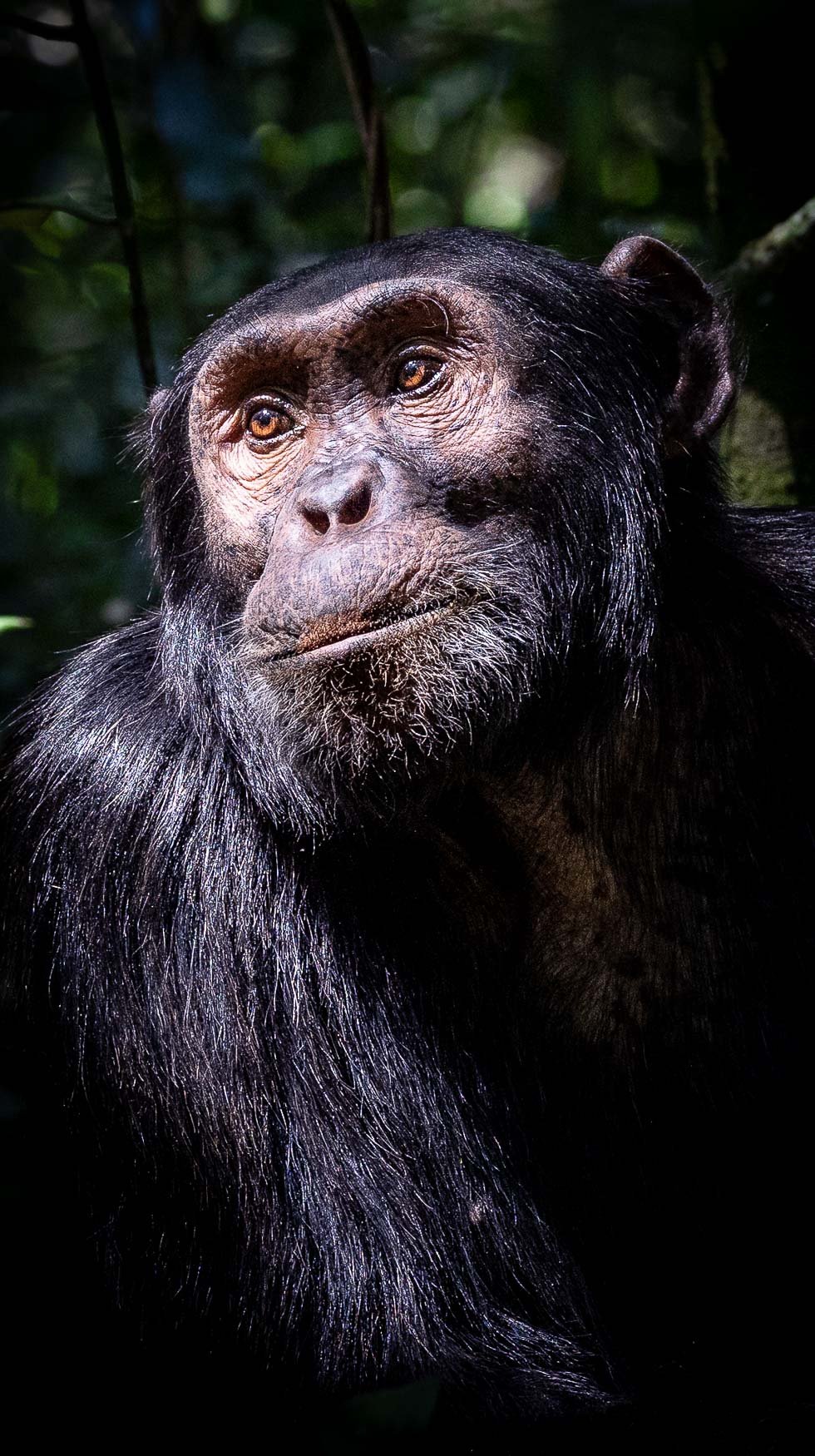
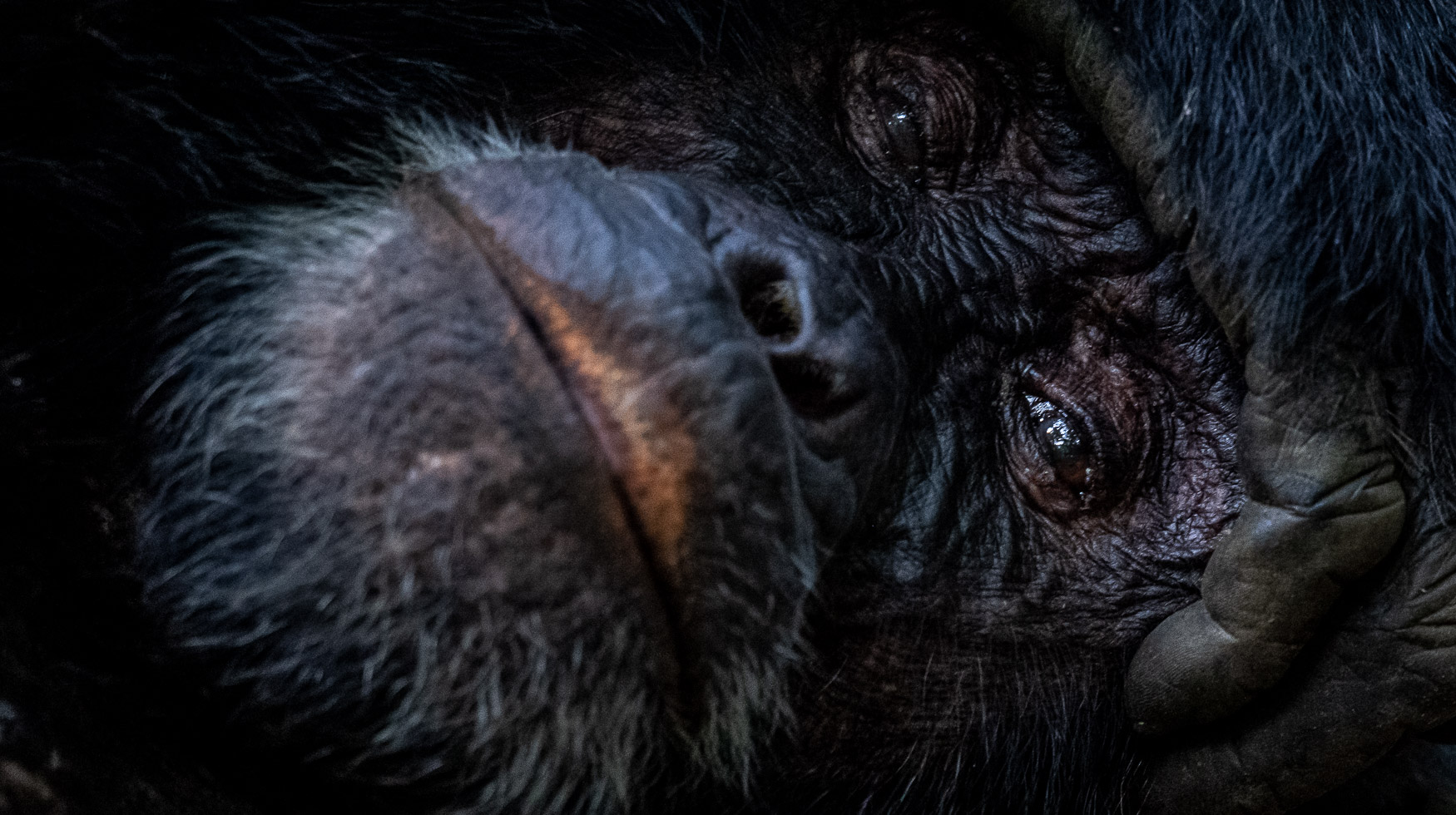
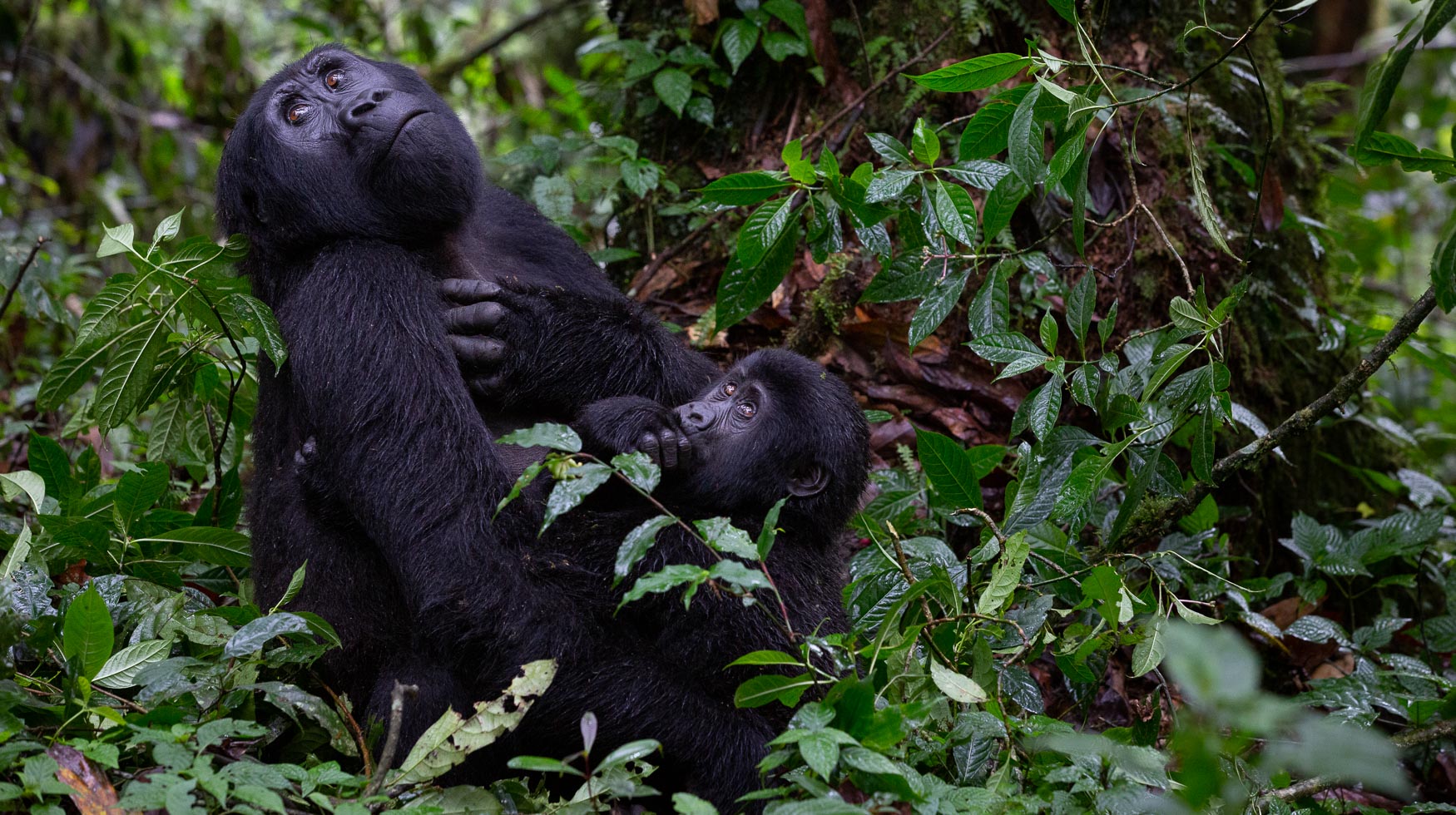
At the end of the day you will be able to get decent images with pretty much any camera - I took a LOT of images with my iPhone - but if you really, really want to go after creating good, quality images the above guidelines on gear would be a good place to start. Also remember that even though you just have an hour with the gorillas to put your cameras down and just enjoy the experience.
Technical Considerations
More important than the gear you use is how you use it. To get the most out of any wildlife photography trip - and this is why traveling with me and my team will always add immense value - you need to understand and be in complete control of your camera and the basics of wildlife photography.
In no particular order here are a few technical aspects of photography and your camera that I would highly recommend you are comfortable and read up on, if necessary, with before you head out to trek gorillas and chimpanzees.
Metering and Exposure: Exposures in the forests can be challenging as you will be photographing a very dark subject against green foliage which, depending on the amount of sunshine, can change the way your camera meters quite dramatically. You might also be lucky enough to see the gorillas and chimps up the trees which brings the sky into play and, as with any wildlife destinations, this can make things quite challenging.
Whatever metering mode you use keep these three (related) things in mind:
Expose for the majority of the frame. Look at what makes up most of your frame and expose for that. Keep an eye on your histogram and protect your blacks and whites. Shoot for your processing. In some instances, regardless of what gear you are using, you will need to shoot with processing in mind. This is a technique you should keep in mind for all photographic safaris as it opens a whole new world of possibilities.
- Exposure Compensation: Linked to the above, make sure you know how to over and underexpose on the camera you are using.
- Focus Points: With, at times, having to shoot through leaves you will need to be very comfortable with the focus points on your camera and how to move them around as and when needed. The same goes for those times when you have your viewfinder filled with a gorilla's face and will have to move your focus points around to make sure you hit the eyes. Remember, at close distance with a focal length and aperture that creates a very shallow depth of field, you need to make very sure that your focus is spot on.
- Shutter Speed: If you do not keep an eye on your shutter speed you will get soft images, it's as simple as that. In order to get a faster shutter speed your ISO needs to be higher resulting in a faster shutter speed would have resulted in a much sharper and crisper image. The lesson here is to not be scared to push your ISO up - rather get a slightly grainy image than miss the image all together.
Apart from the above all the technical basics of wildlife photography still holds true so before your gorilla and chimp treks make sure you're comfortable with your camera, how to use it and what is is capable of.
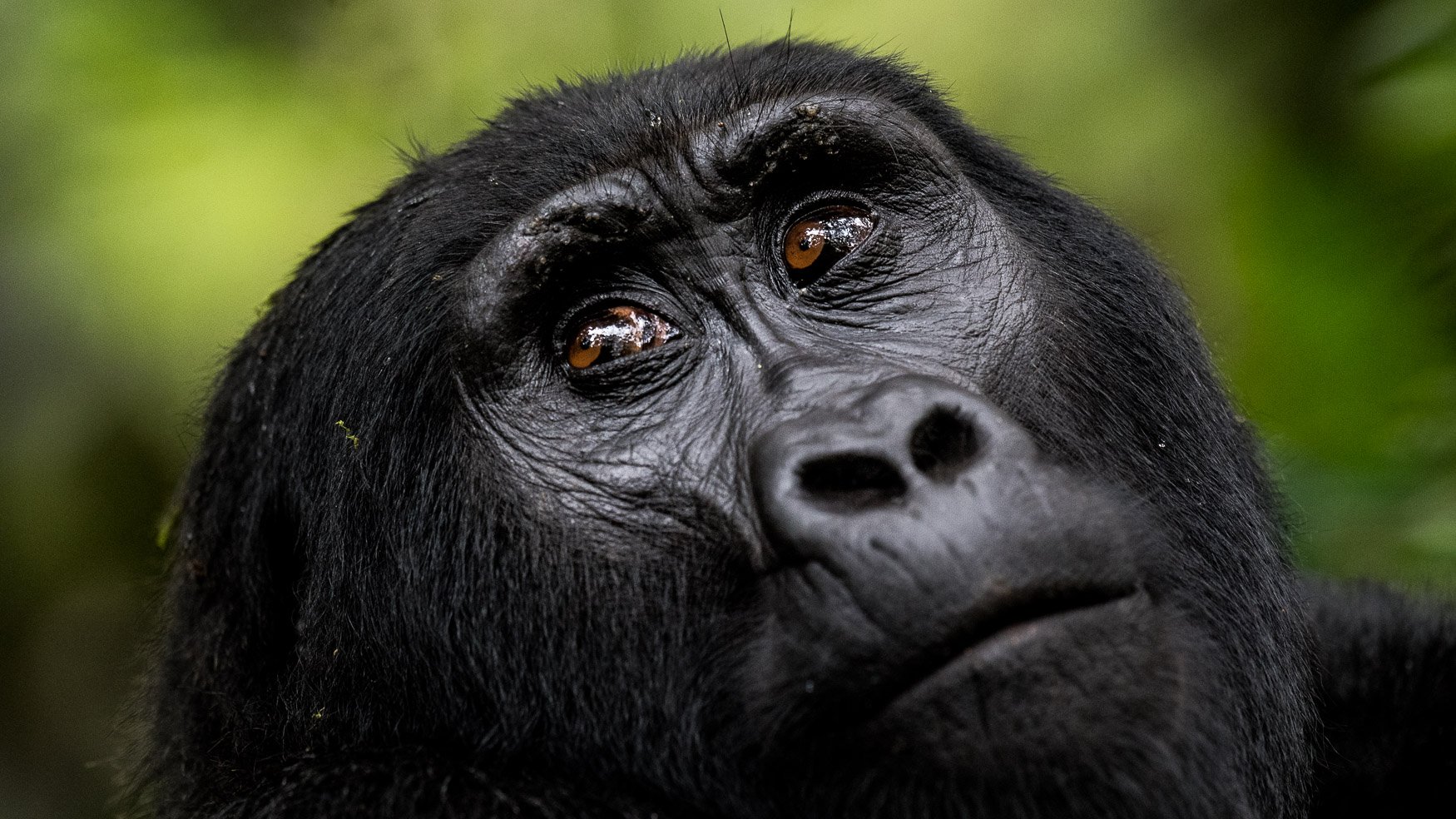
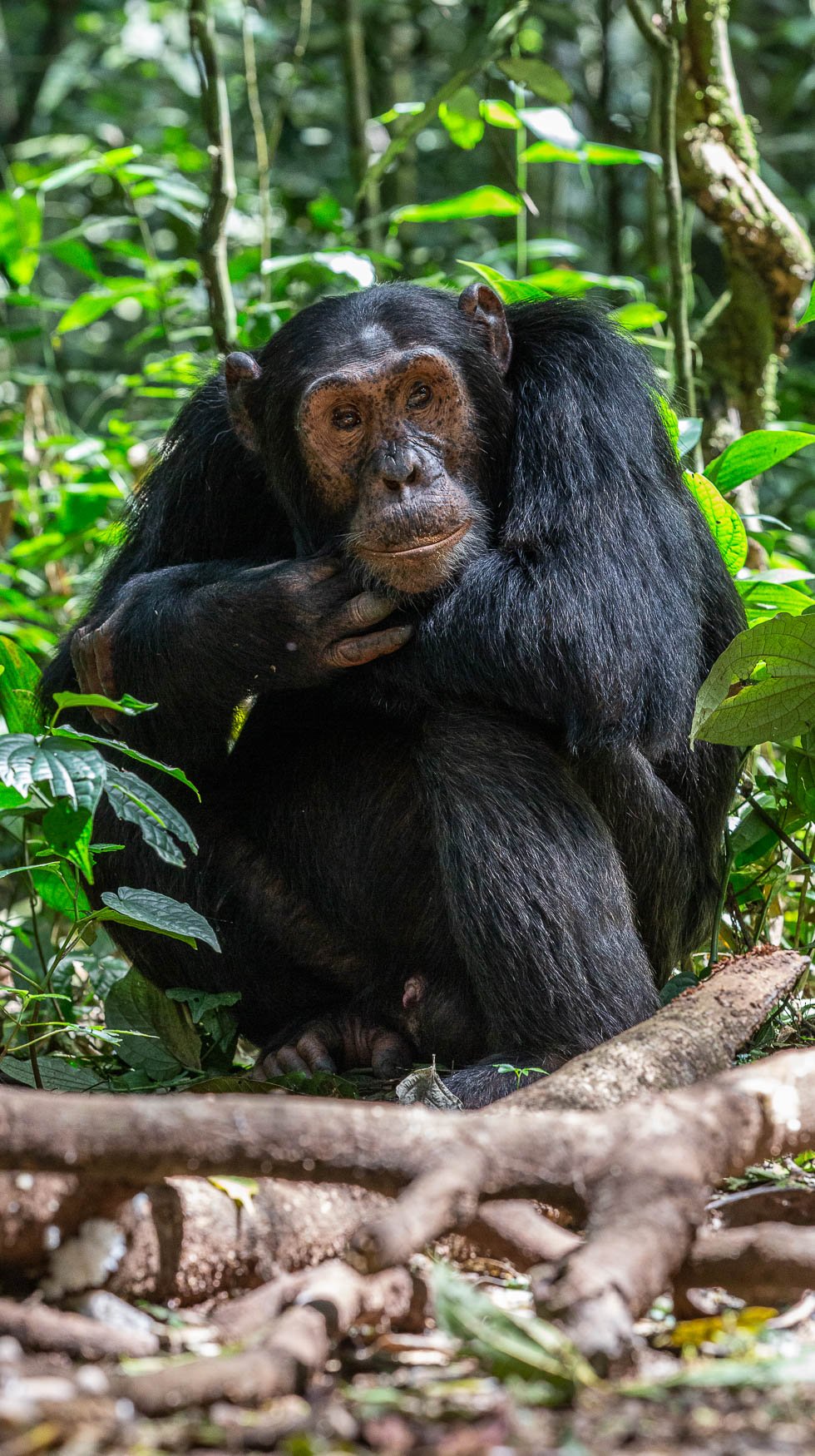
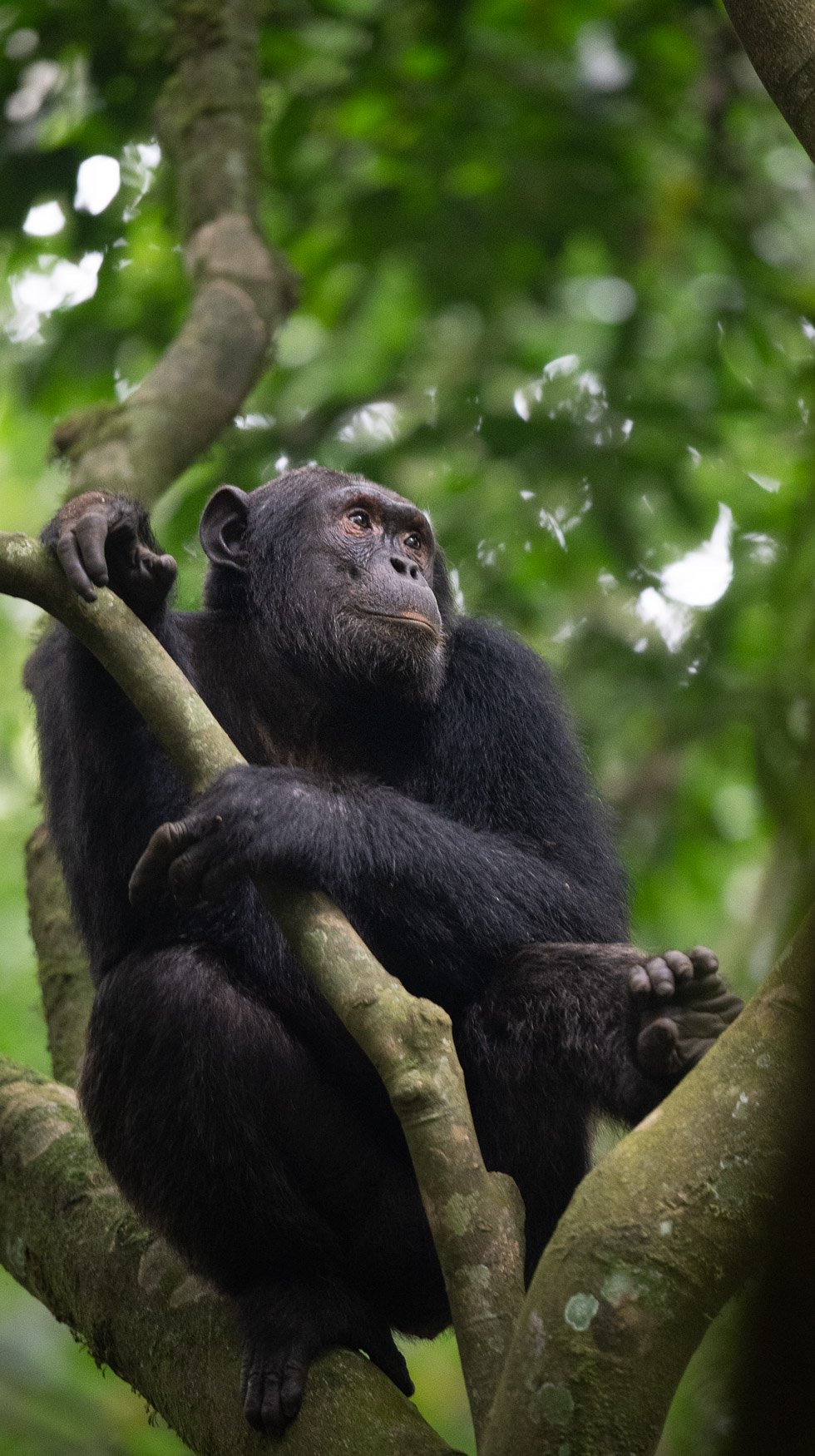
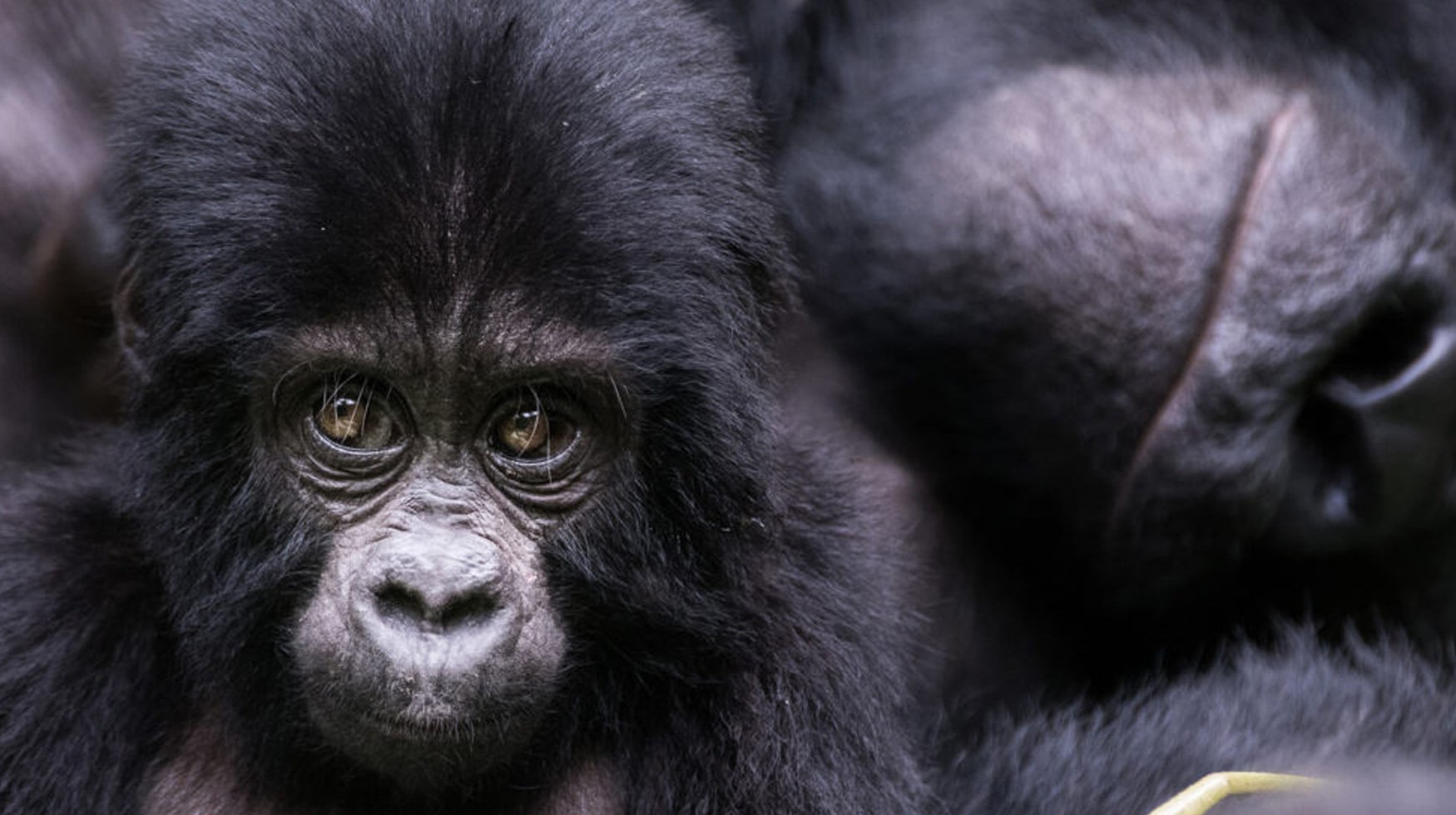
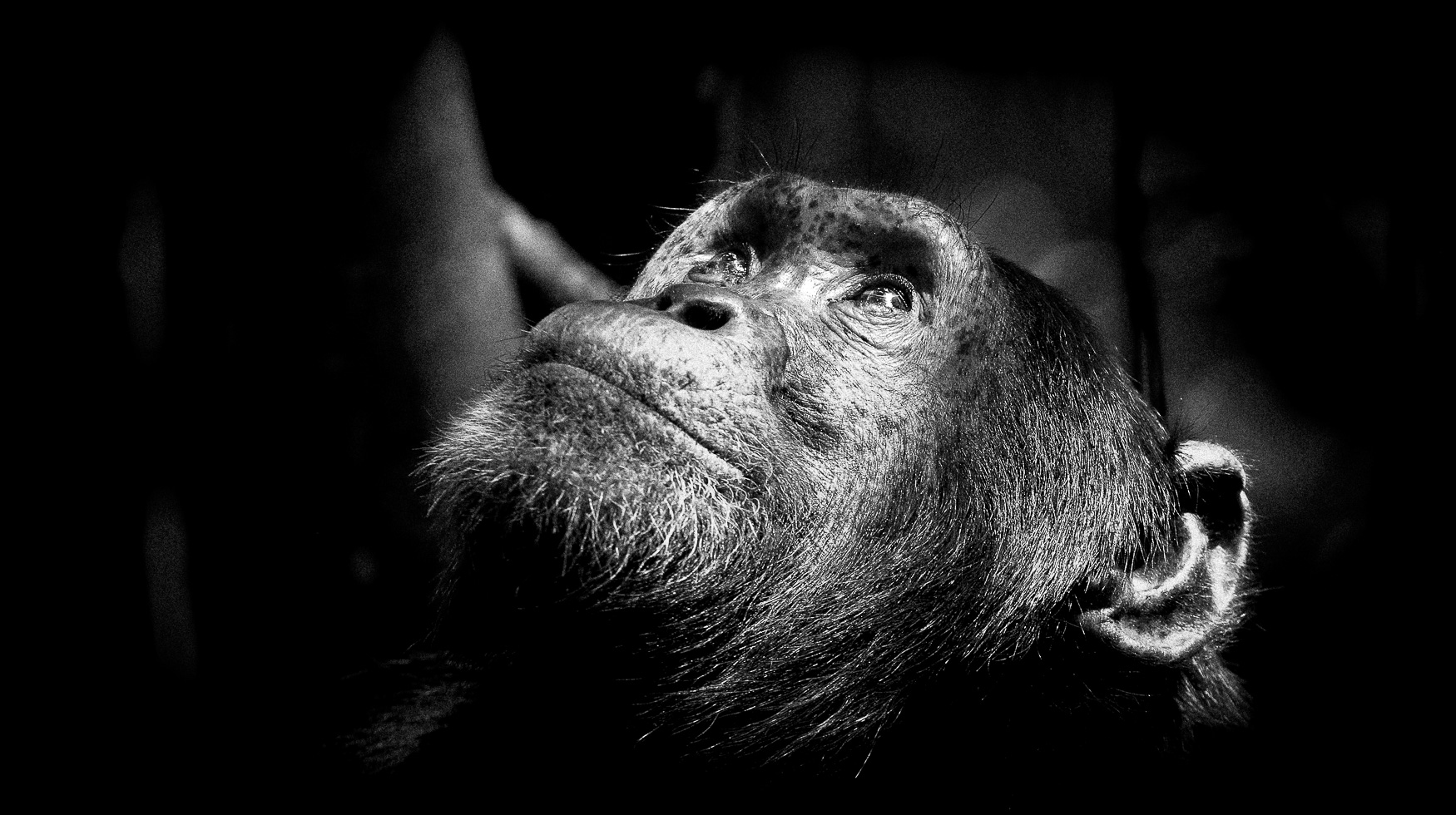
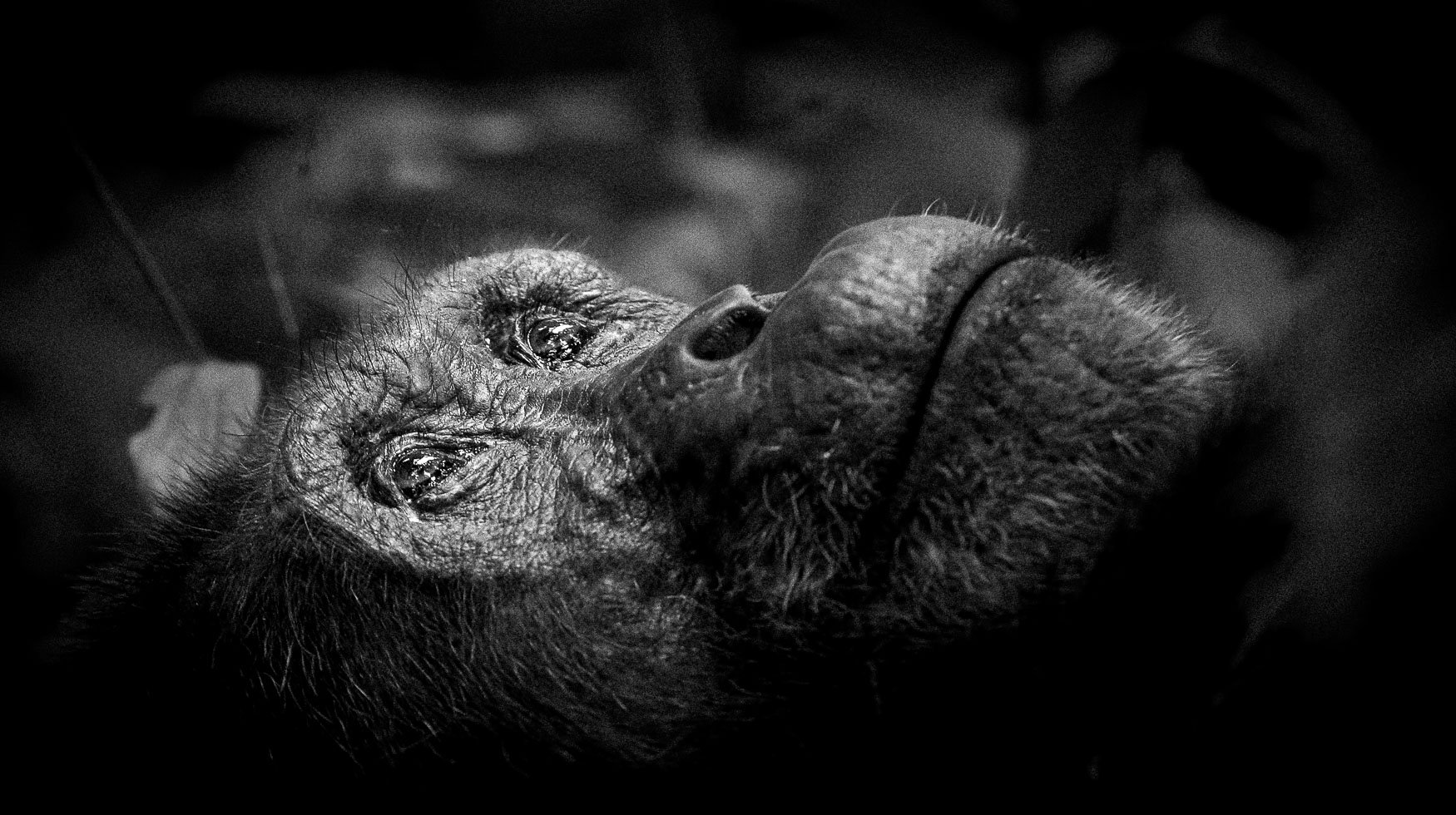
Composition and Creativity
Whatever camera you are using and regardless of the settings you end up using; what you decide to put in the frame is ultimately what will make for a good gorilla image. More than other subjects the emotion in the frame, and how you compose these definitive moments, is what will make or break your images.
Yes I know we are walking a fine anthropomorphic line here but let's be honest, one of the main reasons we so enjoy spending time and photographing these animals is the fact that they are so closely related to us and how we see and recognize how human-like they really are.
Unlike animals like rhino, buffalo or even lions and leopards; a part of a gorilla's mysterious allure is the fact that we see them differently and I think that in this case, unlike with some other species, we need to go after this when we photograph them and do whatever we can to capture and showcase their, for lack of a better word, personalities.
The experience of photographing gorillas is very intimate - you're up close and personal, it's a pretty quiet and almost ethereal atmosphere and you only have one hour with them. An approach I believe will yield great results is to do whatever you can, both from a technical and compositional point of view, to double down on the 'intimate' theme. By layering the intimate atmosphere with an intimate composition and an intimate depth of field you will be creating an image with a lot more substance than just photographing a wildlife subject.
Let's break it down.
An intimate composition would be one where you fill the frame with the subject. I'm not saying just bang the subject in the middle and fill the frame, but rather to get close to the definitive moments by subtly forcing the viewer of your images to look at something and then allow their gaze to flow through the frame. This type of approach really goes for all types of wildlife images but with gorillas it's even more obvious when you get it right.
Where you place the face and eyes and what kind of space you leave for the animal to look into is important because it will influence the way people read your images. Too little space and the image feels tight and uncomfortable - not intimate - and too much space and you loose the feeling of getting to know your subject. It's how people read images whether they know it or not.
Combined with an intimate composition is an intimate depth of field.
This refers to a depth of field that helps to focus your viewer's attention on what you are trying to show them. If you have too much of the image in focus and you show too much of the messy backgrounds (in images that are supposed to be close and intimate) you stand the chance of loosing the connection with the subject. This is where a good understanding of aperture and the four variables that affect depth of field is important and it's something you will need to think about and adjust on a shot by shot basis.
By using a shallow depth of field and thinking about composition, background and your foreground you will have all the puzzle pieces for creating amazing, intimate images of these incredible primates.
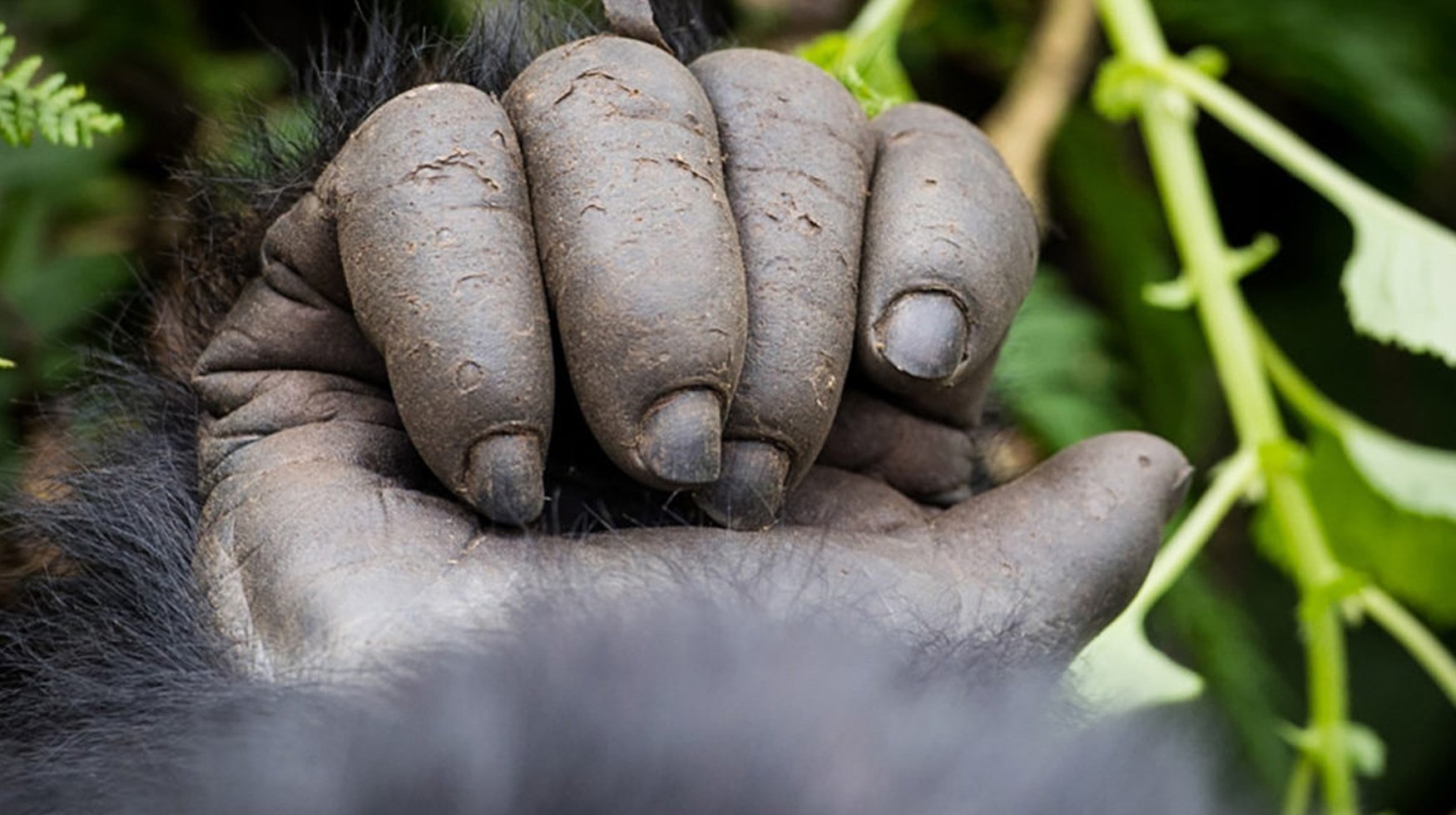

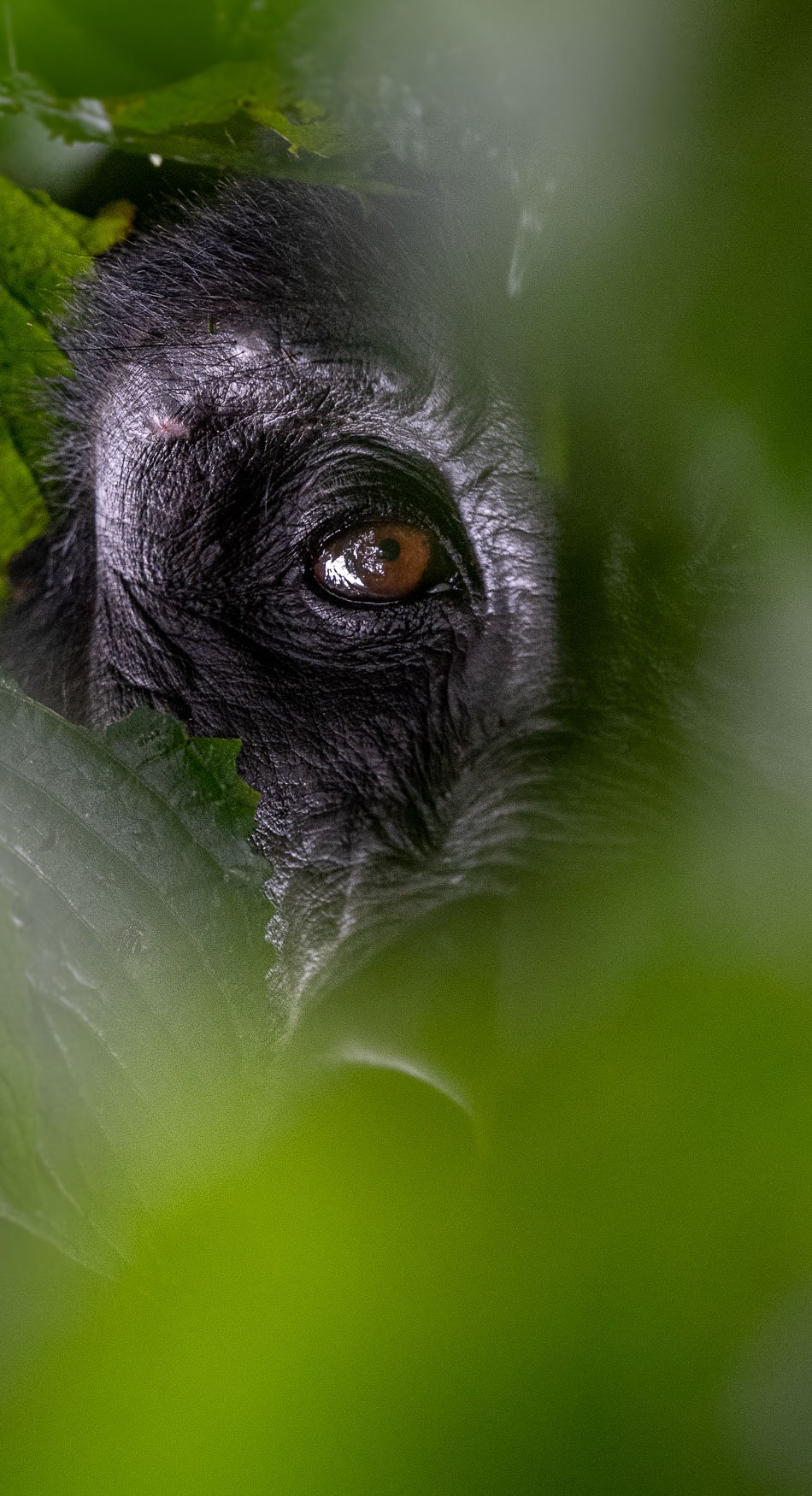
As with anything to do with photography there are no rules and I everything I have included in this post is what I have found works both for my own photography and for the clients and guests I have guided on past treks.
Yes, you can get away with any camera and you will get decent images. My suggestions on equipment are based on stacking the photographic odds in your favour and give you the best chance to create great images.
Yes, you can shoot on Auto - please do not - but my suggestion is to shoot in Aperture Priority mode and focus on the technical variables mentioned above to take full control of your photography.
Yes, you can just place the subject in the middle each time and crop afterwards but by thinking about your composition and trying to create intimate, personal images you will walk away with better images.
Photographing gorillas and chimpanzees is an amazing experience and something I would highly recommend to anybody who is keen on wildlife photography, nature and truly bucket list experience. It really will change the way you see one of Africa's most endangered and incredible animals.
I hope that you all find the above useful on your next trip or first trip when you go photograph these two incredible species.
Until next time,
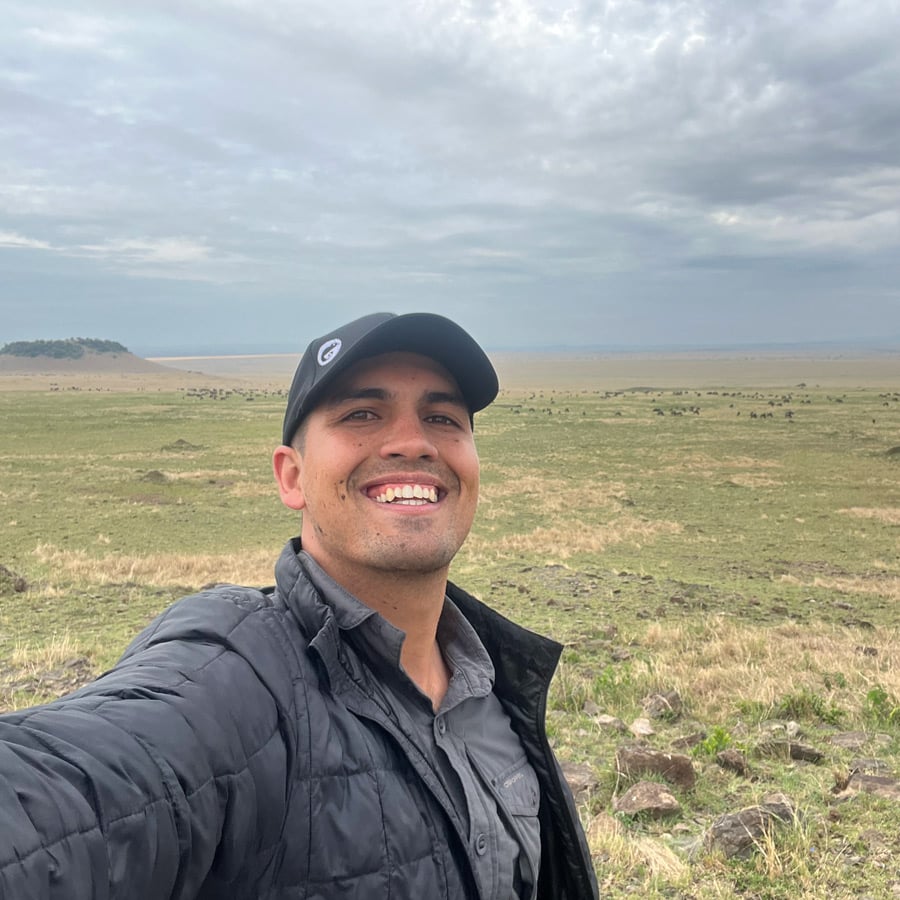
The idea of exploring remote and untouched areas along with guests who are hungry to learn, truly excites me. I strive to share my passion with guests and expose them to a level of appreciation for the big moments, small moments and everything in between.
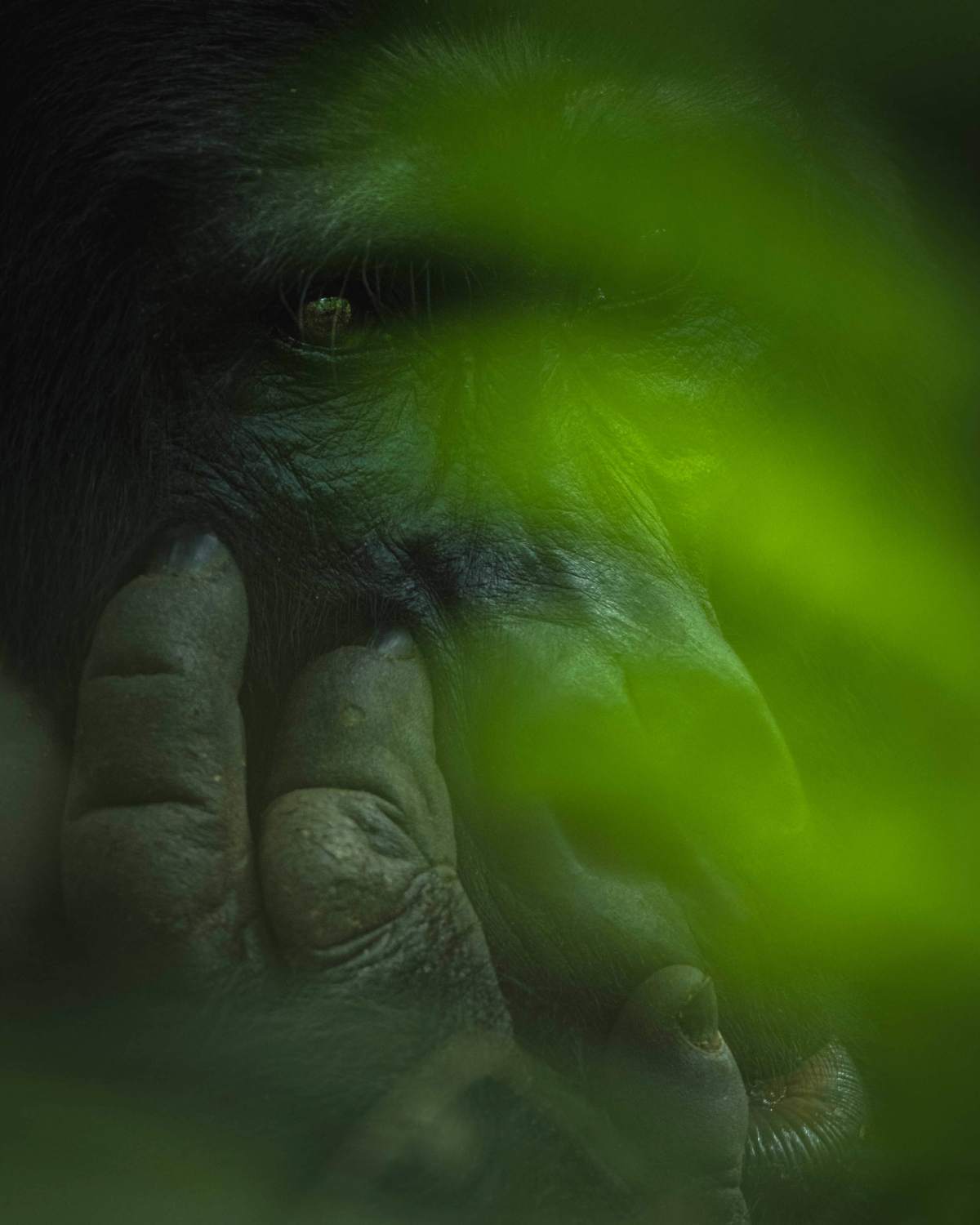
PRIMATES OF UGANDA
This is certainly a bucket list safari destination and we can assist you in checking it off from your list. Our Primates of Uganda Safari focuses on photographing these Great Apes which includes 3 Gorilla trekking permits and 2 Chimp trekking permits, giving you ample time with these magnificent primates. Check out our Tour Page below to find out more information.
